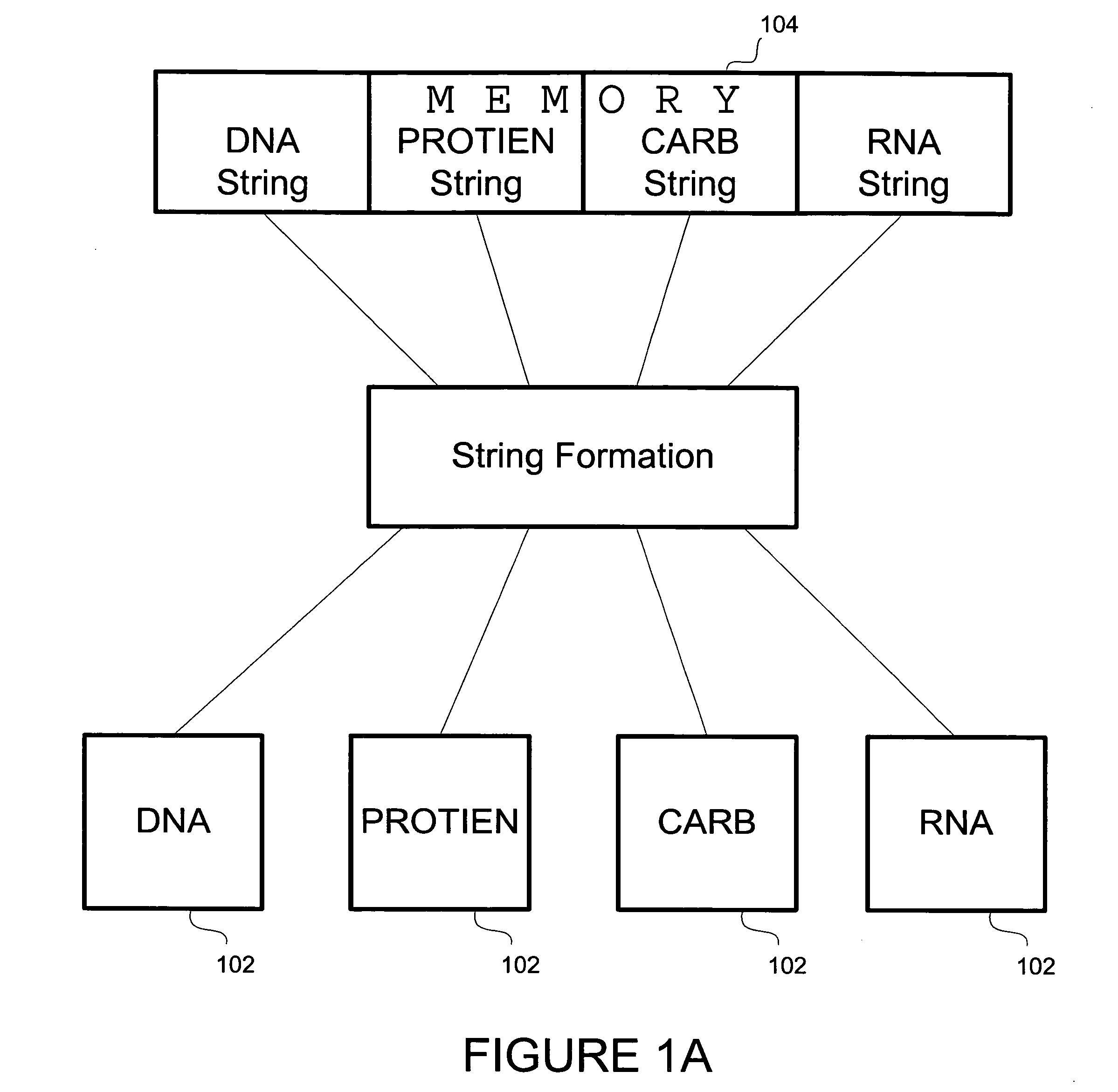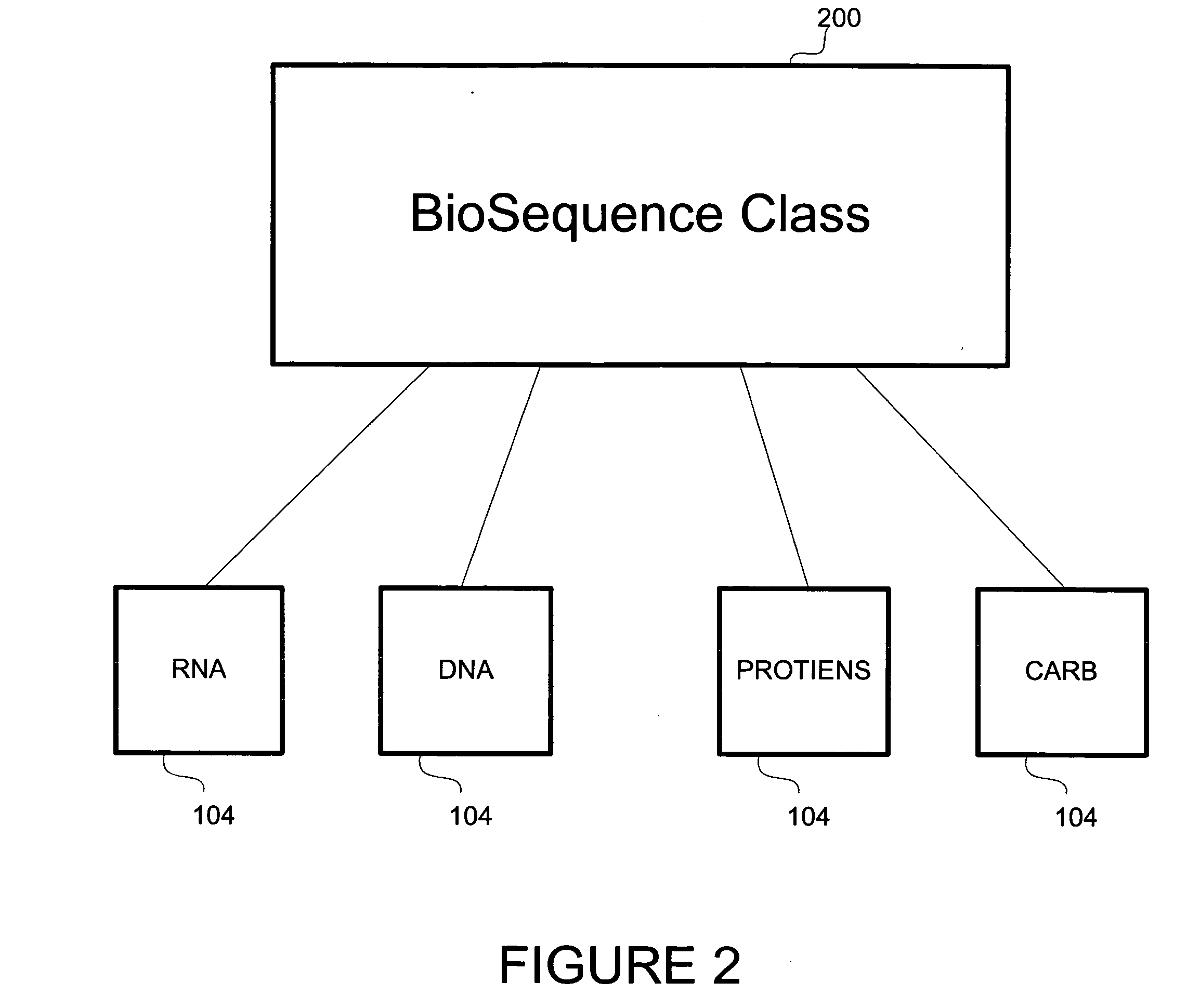Method and apparatus for object based biological information, manipulation and management
a biological information and object-based technology, applied in the field of apparatus and methods for manipulating information and managing information, can solve the problems of difficult programming in computer languages and software programs not designed for scientific applications, and the difficulty of compiling results from a variety of off-the-shelf programs into a single unified and useable database, and the difficulty of compiling the numerous and varied data stores and databases applicable to biological research, for access by a single program or related programming set, and achieves the difficul
- Summary
- Abstract
- Description
- Claims
- Application Information
AI Technical Summary
Benefits of technology
Problems solved by technology
Method used
Image
Examples
Embodiment Construction
It is to be understood that the figures and descriptions of the present invention have been simplified to illustrate elements that are relevant for a clear understanding of the present invention, while eliminating, for purposes of clarity, many other elements found in a typical information management system and method. Those of ordinary skill in the art will recognize that other elements are desirable and / or required in order to implement the present invention. However, because such elements are well known in the art, and because they do not facilitate a better understanding of the present invention, a discussion of such elements is not provided herein.
Objected Oriented Paradigm (“OOP”) overcomes many difficulties inherent in other programming paradigms, such as an imperative programming paradigm like Pascal, a logic programming paradigm like Prolog, or a functional programming paradigm like Haskell. OOP can overcome the inherent difficulties of other paradigms by reducing the pr...
PUM
| Property | Measurement | Unit |
|---|---|---|
| molecular weight | aaaaa | aaaaa |
| time | aaaaa | aaaaa |
| secondary structure | aaaaa | aaaaa |
Abstract
Description
Claims
Application Information
 Login to View More
Login to View More - R&D
- Intellectual Property
- Life Sciences
- Materials
- Tech Scout
- Unparalleled Data Quality
- Higher Quality Content
- 60% Fewer Hallucinations
Browse by: Latest US Patents, China's latest patents, Technical Efficacy Thesaurus, Application Domain, Technology Topic, Popular Technical Reports.
© 2025 PatSnap. All rights reserved.Legal|Privacy policy|Modern Slavery Act Transparency Statement|Sitemap|About US| Contact US: help@patsnap.com



